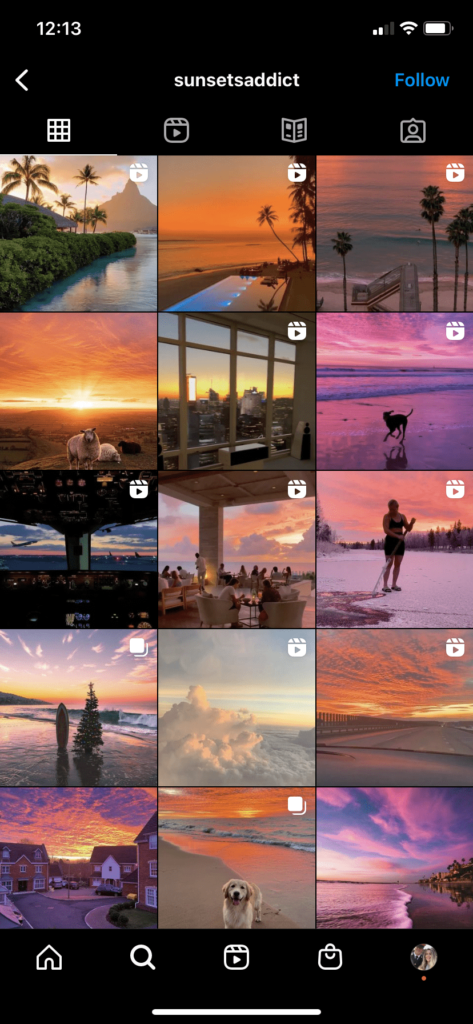Curation is a must for content marketing. Even if you only do it occasionally. Because we can always learn something new from others. And so can our followers.
High-quality content creation still rules. That’s what makes you someone worth following. But the best thought leaders fill their social channels with other content too. That isn’t about them or their businesses.
These curated content examples show how different people curate content for social media. And add value. Because anyone can copy and paste a link and the piece’s title. But the best curators share content with unique insight.
What are the benefits of content curation?
Curated content doesn’t just have to be articles. It can be anything from videos to podcasts and slideshows. And there are so many benefits of content curation too.
Some of the most popular are that it:
- Keeps your content calendar full
- Takes less time than creating your own
- Stops you looking too self-promotional (mixes up original content)
- Increases metrics like social signals (linked to SEO)
- Acts as a great opener to start networking with influencers
- Helps build a community and increase engagement

You can search for it manually on search engines and social media. Or you can let technology help you out. Content curation tools can do the heavy lifting to find relevant content to share. But adding value after is on you.
Here are some of my favorite curation tools:
- Quuu
- Scoop.it
- BuzzSumo
- Triberr
- elink
Once you’ve found great content to curate, here are some ideas for how to share it.
Twitter is probably the most popular place for curated content examples. Unlike some of the other social media platforms, you’re encouraged to post a LOT. But if you’re constantly talking about yourself or your own brand, it can get boring. Fast.
Yes, retweeting is a form of content curation. But Quote Tweets let you add that all-important value. People share links constantly. So, you need to give your followers a reason why they should bother opening one.
Rand Fishkin is a pro at this. Yes, he shares his own content a lot. But he matches this with a ton of curated posts. All relevant to his SEO/marketing industry.
You can choose to share what you learned from a piece of content. Or do what Rand does. And briefly introduce it with a summary:
Here’s another curator doing a similar thing:
It doesn’t have to take your followers to another site either. We know visual social media content tends to perform better. So, curate a great visual (like this one from Hootsuite’s blog) and use it to start a discussion:
(Just make sure the graphic has a source link. Otherwise, you’ll need to add one yourself.)
If you’ve researched well, you’ll find the best content that resonates with your target audience. This nonprofit marketing account knows finding donors will always be important to their followers:
You can even make it simpler. And curate other people’s Tweets or Threads. It doesn’t always have to link off to long-form content:
Link spamming is everywhere. And people are getting sick of them. So, make any you share stand out with visuals, emojis, and intriguing copy to go alongside it. That’s how to stand out on Twitter.
Instagram posts
Instagram’s curated content examples work a little differently. Here, it’s mostly user-generated content (UGC) you’ll find. Companies share photos and videos their customers have created. Usually including their products.
You see this type of content mostly from eCommerce brands:
So, how else can you curate apart from UGC? Because you’re not really meant to include yourself in this type of content.
As Instagram is a visual platform, you can choose to share clips or images that are related to your industry. Ocean jewelry-makers Honu reposted this reel another user took of dolphins swimming.
They credited the source. But made sure to add their own caption with an interesting fact:
You can curate in other ways too. Buffer chose to feature 6 LGBTQ+-owned small businesses for Pride month this year:
It’s not just singular posts, either. A big part of Instagram’s user base curates entire feeds. They choose a topic or theme and fill it with graphics that fit. Like this collection of sunsets:

Or this labrador-themed page:
Whatever you choose to do, remember to get permission from content creators to repost. Then credit the original source in the caption and tags. And don’t go too text-heavy in any graphics, either. Save that for LinkedIn or Facebook.
Email newsletters
Research is a huge part of any content curation strategy. But what if you could get new content sent straight to your inbox weekly? Or even daily?
Curated newsletters are huge with bloggers now. People love them because they own and control them. (Unlike social media platforms.) And they can be another helpful source of content for your social media marketing.
Plus, each newsletter creator formats differently. So they can be handy curated content examples for inspiring the layout of your own posts.
The Moz Top 10 is a semi-monthly email. They round up their top 10 favorite articles on SEO and digital marketing. They’re another great example of summarizing a piece of content in a line or two.

Robinhood Snacks is a financial newsletter. They aim to help you make sense of the Nation’s economics and breaking news. They focus on fewer subjects per email but go into a little more detail than Moz.

Source: Robinhood Snacks
They’ve also got a really unique brand voice for their sector. Which makes reading about finance easy and (almost) enjoyable.
It just proves that any industry can be made interesting. And curating can help. Your curation strategy could be to help your audience make sense of complex subjects or news from your niche. Give it a try and see if people react positively.
LinkedIn is a platform for professionals. It’s mostly used for job-hunting and work-related updates. And the LinkedIn News section is where most people find valuable content to curate.
It’s made up of the day’s top professional news stories and conversations. So, this is your best bet if you’re looking for high engagement on your posts. But only if you’ve got a solid opinion to add to it.
Here’s a recent curated content example on the phenomenon of “quiet quitting”:

Source: LinkedIn
LinkedIn is probably the only social network you can get away with long-form share texts like this. People want to hear what you’ve got to say. Because you’re there to promote yourself as a business leader or someone hireable.
Sharing your opinion is a great way to start a debate on your post. And this is where the engagement comes from. Because people will want to share their takeaways from the piece too.

Source: LinkedIn
You don’t have to be controversial either. But this way of formatting your curation is a way of getting across your values and sharing your expertise. Plus, it’s just asking to be commented on by those who disagree. Hello, engagement.
You’re in luck if Pinterest is part of your content marketing strategy. Because the whole thing is based on curation. Up until recently, anyway. Users bookmark then organize content to refer back to later or buy while they browse.
Pinterest’s algorithm is a little different from other social platforms. As people here want to discover new content. Rather than having it shoved in their faces without asking (looking at you, Instagram).
As a Pinterest user, you can now have 2 kinds of boards:
- Created
- Saved
“Created” tends to be for content production. But clever brands use the “Saved” side to curate awesome boards. Like lifestyle brand HonestlyWTF:

Source: Pinterest
They share curated boards of things that inspire them. So, they believe it’ll resonate with their followers too. And as a lifestyle brand, there’s a pretty wide range here. From interior design to recipes and fashion.

Source: Pinterest
You can also get ideas from Pinterest’s “Today” top trends page. Their team curates a few daily boards on various topics. Here’s one for small swimming pool ideas:

Source: Pinterest
Pinterest is full of examples of content curation. So, pick a topic or theme similar to your business and start saving pins. Then, share with your audience and see if they’re interested. You won’t know until you try.
Trending news
RSS feeds and other content aggregators are great sources for curated content examples. But it can take a long time to sift through the noise and find the gems. Searching hashtags on Twitter also works, but you won’t find much long-form content there.
Trending news is one of the most popular types of content to curate. (As we’ve seen with LinkedIn and newsletters.) So, finding news sites that are relevant to your industry is the first step.
Say you’re in digital marketing. SparkToro shows the most popular stories that people are writing about. So, you can go through the list, find a relevant piece, and post about it too.

Another good one for the same industry is Social Media Today. They curate a ton of articles, interactive infographics, and blog posts about social media marketing. They cover the outline in a shortened version then link to the original.

You could use this method to save even more time when curating for social media. These sites have done the hard work of collating the content. So, you know it’s going to be an interesting topic.
And if you’re quick, you might jump on it before the masses even realize it’s there. And steal the initial flurry of engagement.
Facebook is a little tougher to search for content because of privacy settings. But that doesn’t mean you should rule it out.
Facebook Groups can be great places to find content that hasn’t been widely shared. Lots of this “underground content” is shared in private groups. Because public ones tend to get spammed a lot. So, you must request to join these before seeing posts.
Here’s one from a Women in Content Marketing group I’m part of:

Source: Facebook
But how do you find these groups? Well, use your favorite search engine to find suggestions for your niche. Sticking with the marketing theme, I found this list on Ahrefs of their top 10 to check out:
- Marketing Solved
- SaaS Growth Hacks
- CXL – Conversion Optimization, Analytics & Growth
- SaaS Products & Marketing
- Facebook Ad Hacks
- Sisters in SEO
- Google SEM Mastermind
- Dumb SEO Questions
- Local SEO Strategies & Google My Business Help with Tim Kahlert
- Superstar SEO
Just check the group rules for any you join to ensure link sharing is ok. Otherwise, you’ll be searching for content you’ll never find.
There are also lots of public Pages where you can find curated content examples. But be prepared to do a lot of searching to find them. And get ready to bookmark any valuable ones you find.

Source: Facebook
Facebook isn’t the easiest place to find curated content. And it can be pretty time-consuming. But there’s gold there if you’re willing to put in the effort to dig for it.
Conclusion
How you curate is a very individual process. But curated content examples can be really inspiring. Even if it makes you decide you don’t want to do it like that.
What works for you will depend on the industry you’re in. And which social media platforms you’re on. You might even choose not to link off to content at all. If you do, remember the golden rule: always credit the source.
Valuable content always does well on social media. You just need to format it in a way that grabs people’s attention. And stands out from a sea of mediocrity. You got this.
Who do you follow that uniquely curates content? Which social media platforms work best for curation? Let us know in the comments below!





